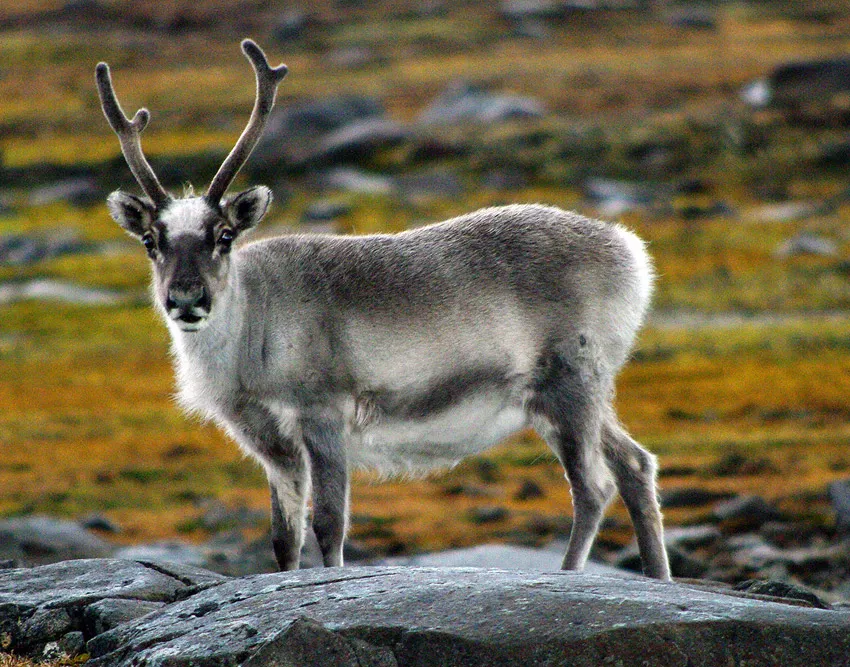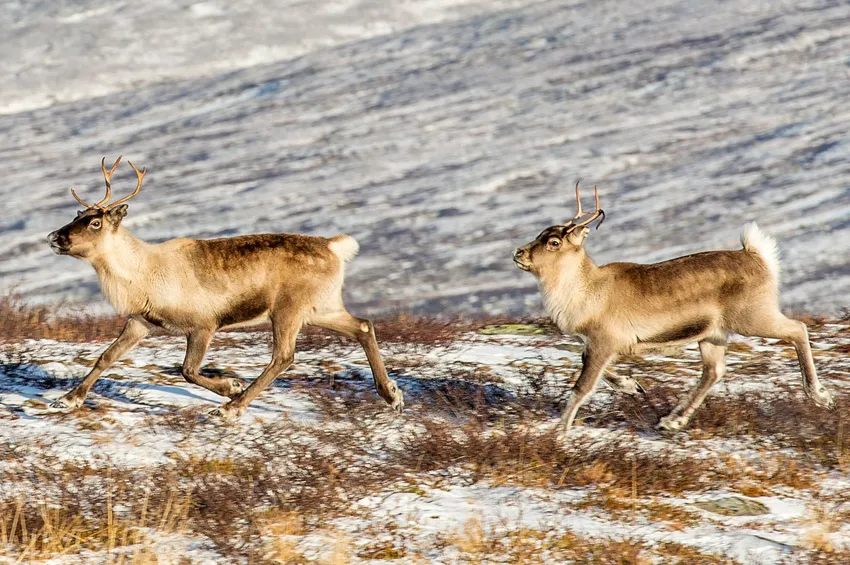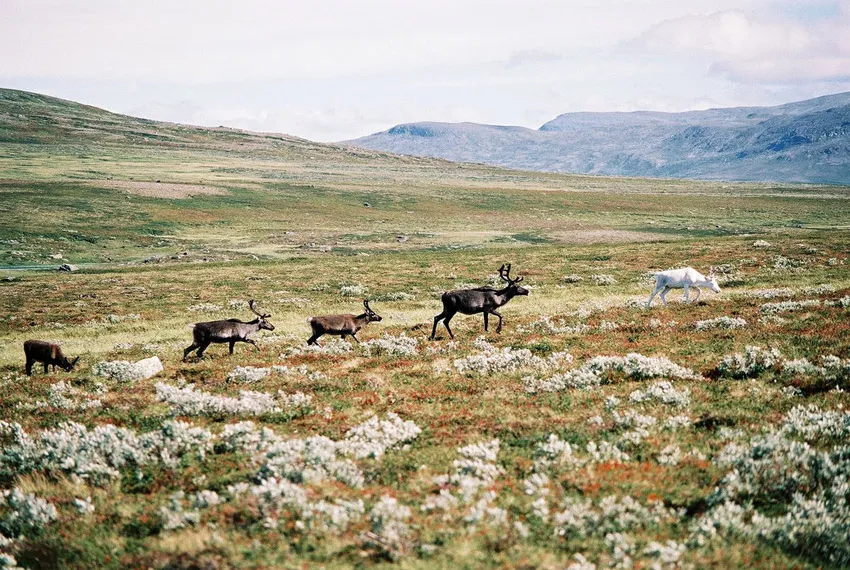Arctic Reindeer / Caribou - Facts and Adaptations
Rangifer tarandus
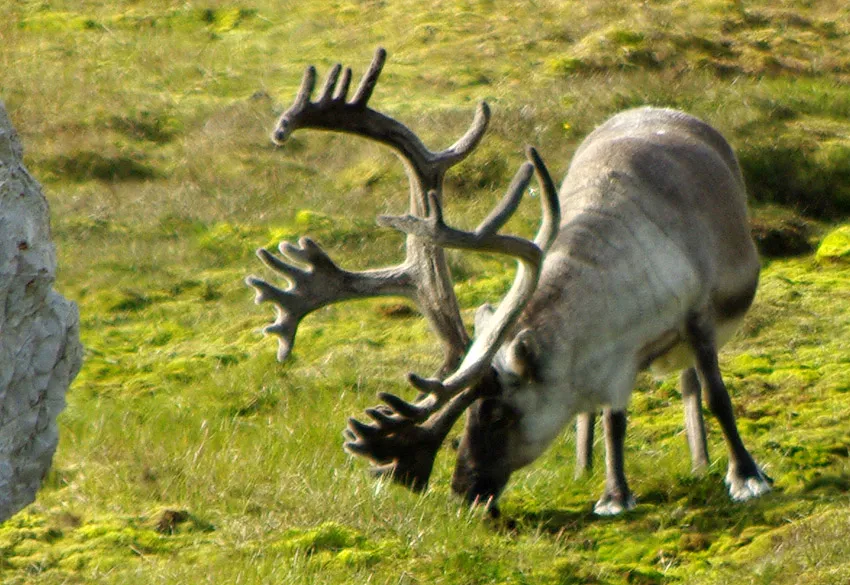
reindeer / caribou facts Basics
Average Weight: 60 to 300kg (132 - 660
lbs)
Average Length: 160 to 200
cm long (5.3 - 6.6 feet) plus a short tail of 14 - 20 cm
(6 - 8 inches), 80 to 150cm (2.6 - 4.9 feet) tall at the
shoulder.
Females are smaller than males, the extent
of the difference varies in the different subspecies, domesticated
reindeer have shorter legs and are heavier then wild reindeer/caribou.
Breeding Season: Mating is from late
September to early November when males compete with each
other for access to females. Most encounters between males
are dealt with at a distance without contact, though this
does happen by locking antlers and pushing when a pair of
males both think they are the strongest. A successful male
may mate with 15-20 females during this time. The requirement
for constant vigilance against other males during the mating
season means that dominant males have no time to eat and
lose much of their stored reserves. A male may only be able
to display this level of dominance for one season in his
lifetime when he is large enough at around 6 years old.
Calves are born in May or June. Newborns can follow
the mother within about an hour of birth, they start to
graze after about 45 days but continue to suckle from their
mothers as a supplement for several months.
Estimated world population: - 1 million worldwide,
fluctuations that appear to be cyclic over 40-60 years.
Feeding & diet: In the summer months
reindeer eat sedges, grasses, herbs, ferns and mosses on
the tundra. They will also eat shoots and leaves of trees
when available being particularly fond of willow and birch.
They have been recorded as being opportunistic carnivores
eating lemmings, birds eggs and arctic char (fish).
In the winter months they feed almost exclusively on
lichens and fungi which they often gain access to by sweeping
snow and ice away with their antlers and/or hooves. Reindeer
have the unique adaptation amongst mammals of having an
enzyme called lichenase which enables them to break down
tough lichens to release glucose.
Conservation
status: Least Concern.
Distribution:
Circumpolar including many islands, native to the far north.
Predators: Reindeer are predated upon
mainly by wolves which hunt them in packs, particularly
in the winter. The calves in the calving season are subject
to heavy predation, mainly by golden eagles and sea eagles,
but also by wolverine and less commonly brown bears and
polar bears.
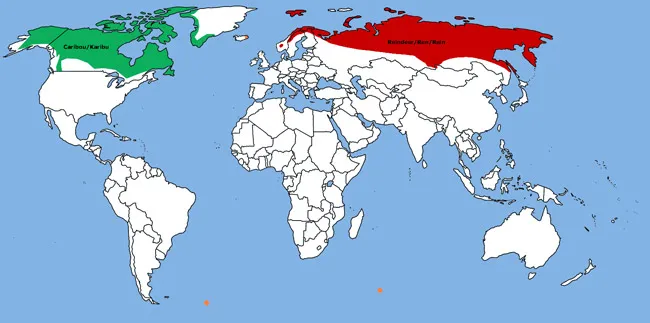
Distribution range of reindeer / caribou
What are Reindeer / Caribou like? how do they survive?
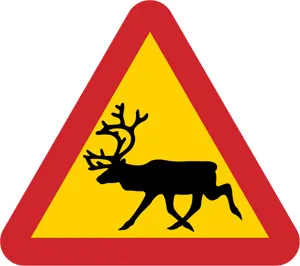 Reindeer live in areas of Arctic tundra (a
cold treeless plain, frequently poorly drained) and
the northern boreal forests that make up the southern edge of
the tundra. They are herbivores and ruminants meaning
they feed on plant material which they ferment with bacteria
in a large intestinal chamber called the rumen which is then
regurgitated to be chewed again (chewing the cud) before passing
further down the intestines.
Reindeer live in areas of Arctic tundra (a
cold treeless plain, frequently poorly drained) and
the northern boreal forests that make up the southern edge of
the tundra. They are herbivores and ruminants meaning
they feed on plant material which they ferment with bacteria
in a large intestinal chamber called the rumen which is then
regurgitated to be chewed again (chewing the cud) before passing
further down the intestines.
Reindeer live within families (mothers and calves) within herds of various sizes. Tundra reindeer live in large herds, though they fragment and become smaller in the winter months. Wood reindeer live in groups of no more than 20-30 throughout the year.
Historically reindeer were found across much of Eurasia above the line of latitude of 50° north. There was much concern a little while ago (2009) about the continuing decline of wild reindeer herds all across their range with global warming being blamed. No link was found however and some of the previously declining populations have begun to stabilise or increase in size again while others that were stable have begun to decline.
Herds are threatened by harvesting by hunters, regional climate trends and by increased development particularly of mining and oil and gas facilities which in their turn bring in more workers who may also hunt recreationally.
Reindeer have a relationship with humans going back thousands of years. As a hardy large herbivore they have been herded for food and to provide the muscle for transport by circumpolar peoples of the north. They are still hunted for food and other materials such as hides, antlers and bone to make tools by a number of Inuit peoples. They are herded in particular by the Sami and Nenets, they are not fully domesticated in the way that sheep and cattle are but are semi-wild roaming on pasture in a process of nomadic herding. There was a herd introduced to the Sub-Antarctic island of South Georgia when 10 animals were landed in 1911 to provide food for whalers and sealers, this population had grown to around 6,600 by early 2014 when they were all culled due to their impact on native bird life.
Reindeer / caribou Adaptations:
- Low surface area to volume ratio (anatomical)
- Being large means it is easier to stay warm by retaining
heat generated by the metabolism, adult reindeer vary from
around 60kg to 300kg.
-
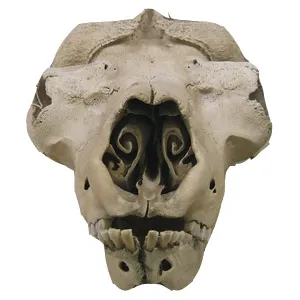 Nasoturbinal
bones in the nose (anatomical) - curled thin bones
in the nose (see those in a related species in the picture
to the right) that support thin tissues in the nose that
are richly supplied with blood vessels to warm icy air when
breathed in before it reaches the lungs. The incoming cold
and therefore very dry air is also moistened before it reaches
the lungs while the nasoturbinals help to recover this moisture
again on the way out.
Nasoturbinal
bones in the nose (anatomical) - curled thin bones
in the nose (see those in a related species in the picture
to the right) that support thin tissues in the nose that
are richly supplied with blood vessels to warm icy air when
breathed in before it reaches the lungs. The incoming cold
and therefore very dry air is also moistened before it reaches
the lungs while the nasoturbinals help to recover this moisture
again on the way out. - Hooves that adapt to the season (anatomical)
with footpads that are sponge-like in the summer so providing
extra traction on the soft, wet and frequently slippery
tundra and that have an exposed hoof in the winter following
the shrinkage of the footpad. The exposed sharp hoof rim
cuts into snow and ice so providing a secure footing also
enabling the reindeer to dig through snow to find food in
the winter.
- Ultra violet vision (physiological)
an only recently discovered adaptation is that reindeer
vision extends beyond the normal visible part of the spectrum
into the ultra violet. Snow and ice are very UV reflective
while urine, predators and lichens all strongly absorb UV
light. Against a bright snow/ice background, dark urine
may indicate the presence of predators or mates, predators
such as wolves show up very strongly as dark silhouettes
despite their camouflaged fur colour especially in low light
conditions and lichens are a major food source, so again
appearing as dark against light.
Caribou spot wolves using uv vision video 3 mins 38 secs - BBC - Movement to higher altitude in the summer to
avoid biting insects (behavioural) reindeer also
form condensed groups at this time to protect those animals
on the inside of the group from the irritation caused by
the insects.
- The formation of herds (behavioural)
Living in herds provides reindeer with protection against
predators rather than being able to be picked off one by
one. It also provides protection from biting insects in
the summer months. Superherds of reindeer may form which
contain from 50,000 to 500,000 individuals.
- Migration (behavioural) Reindeer migrate
further than any other terrestrial animal, as much as 5,000
km (3,100 miles) a year. However some groups of reindeer
don't migrate at all. In general they migrate north
in summer where the increased day length leads to growth
of plants to graze on though to areas that have few or no
trees and so provide little shelter. Winters are spent further
south and in forested areas which provide shelter from the
worst of the weather especially during storms.
- Antlers for defence against predators, clearing
snow and for males for competition for mates (anatomical)
- Reindeer are the only deer where both males and females
have antlers, they seem to have somewhat different roles
in each. Antlers are made of bone, they are grown and shed
annually unlike in animals with horns which are made of
keratin, the same material that makes skin, fingernails
and hair and are not shed. Male reindeer shed their antlers
at the end of the year in November / December while females
retain theirs until the following spring (a fact that is
often used to show that Santa's reindeer were all female
as they still have their antlers at Christmas). The females
use the antlers in the winter to push snow aside and gain
access to food, the males are thought to use their greater
body weight for the same reason meaning they don't need
antlers. Males start to grow new antlers around February
and use them to compete for mates with other males.
Antlers may seem to be a pointless extravagance for males though the ability to grow large antlers each year and the large metabolic burden this puts on the animal is a very good way of showing that the animal is fit, strong and in the peak of condition. - A rich fur coat for retention of heat and protection from the weather (anatomical) - There is a soft fine undercoat of woolly insulating hairs and a longer coarser top coat of protective guard hairs. The longer guard hairs help to shed rain and the worst of the weather. The coat as a whole also traps air when in water which helps make the reindeer buoyant and so more able to be able to swim well. A thicker undercoat is grown for the winter which is then shed the next spring/summer.
Copyright pictures used by permission: Creative Commons Attribution 2.0 license - Group on tundra with albino reindeer -- oskarlin
Creative Commons Attribution 4.0 International license - bottom of page, two reindeer in snow - Arild Vagen

